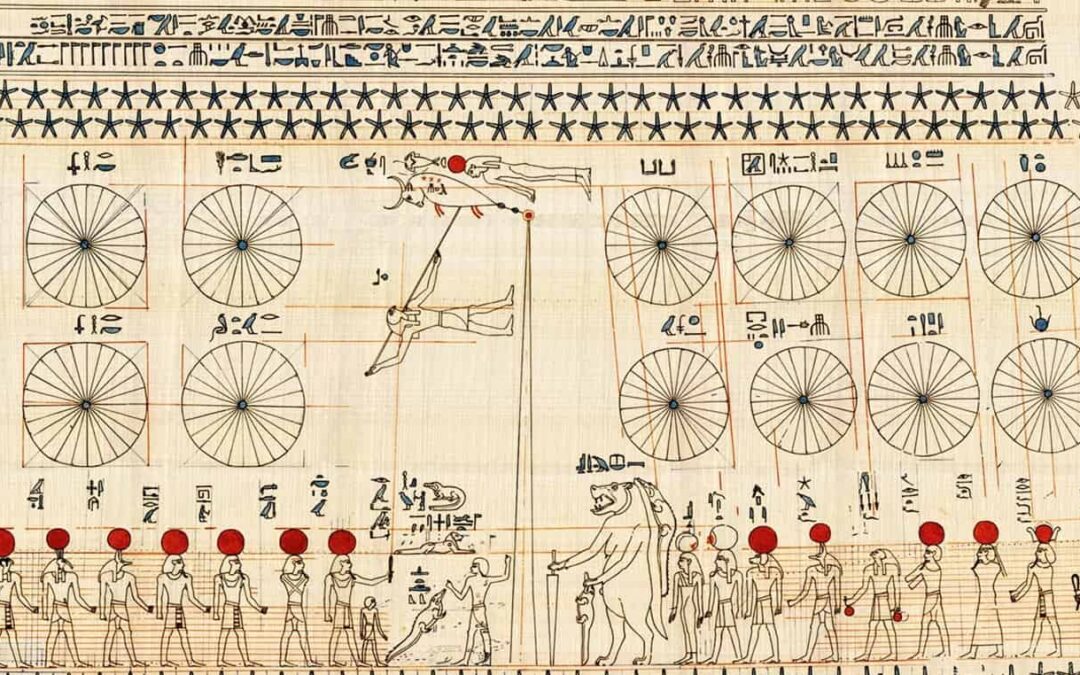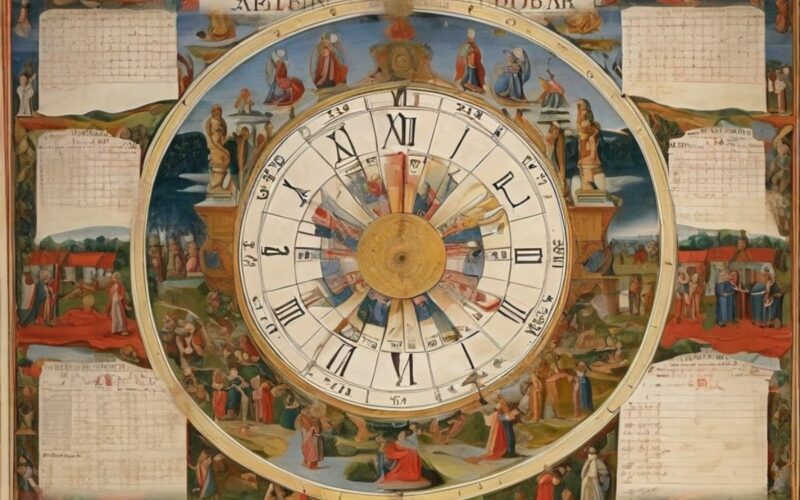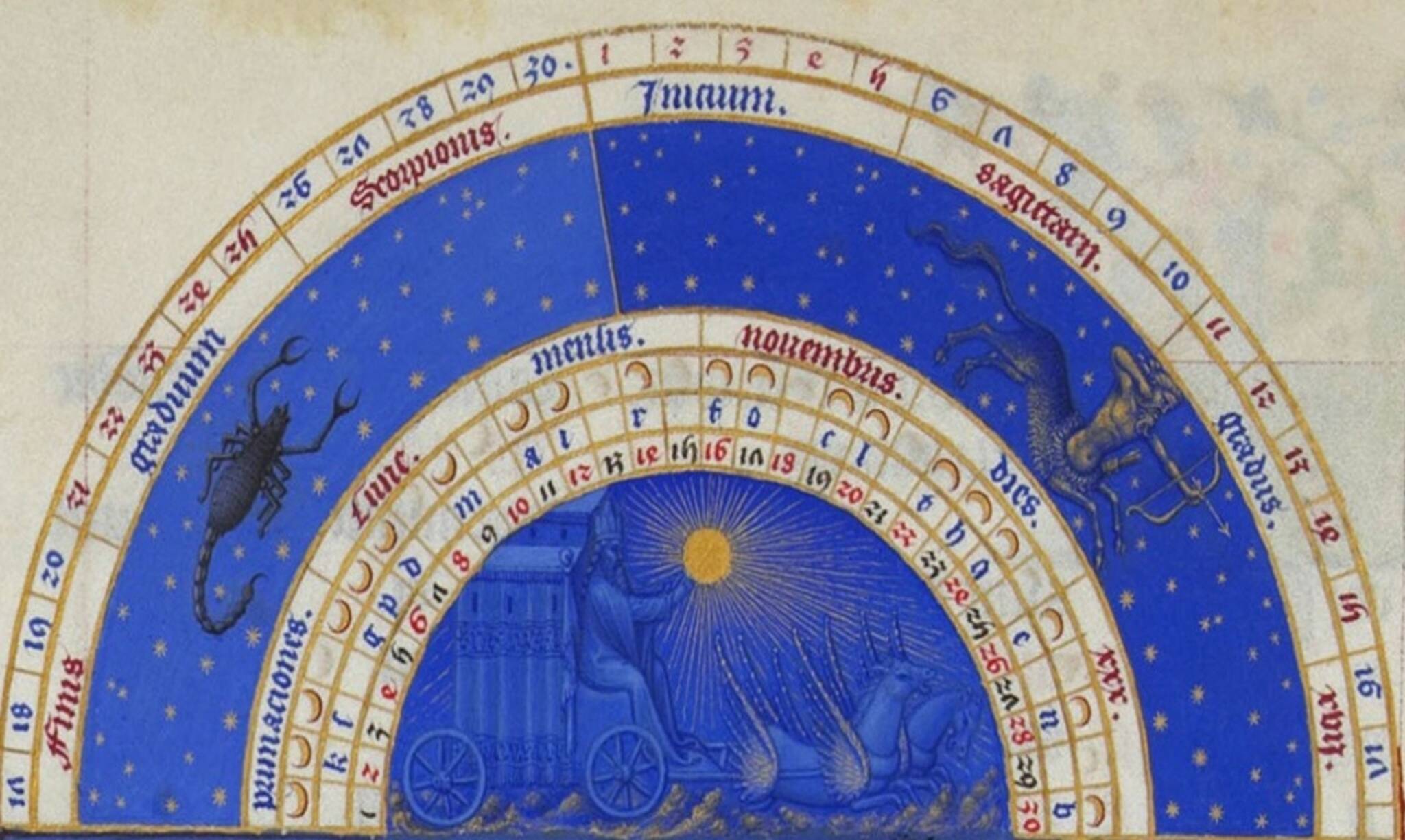Origin Of The Calendar
Origin Of The Calendar - The purpose of the calendar is to reckon past or future time, to show how. Web history of the calendar. Web the earliest evidence of astronomical activity is an ishango bone with markings, thought to be a lunar calendar which dates back to around 20, 000 bc. Web ancient calendars from mesopotamia, for example, coordinated months and seasons by adding extra months every now and then, a process called intercalation. Web the new calendar, as we know it today, was not adopted uniformly across europe until well into the 18th century. Ancient calendars were based on the phases of the moon and the solar year. Web in origin the calendar goes back to the captivity in babylon, when the jews adopt the babylonians' calendar and their names for the months. Web the lunisolar calendar, in which months are lunar but years are solar—that is, are brought into line with the course of the sun—was used in the early civilizations of. Web the julian calendar was naturally adopted by the successor of the roman empire, christian europe with the papacy at its head. 1200, a day as reckoned back from the first of the following month (as fourteenth calend of march = february 16th), from latin kalendae first day of the.
Web in origin the calendar goes back to the captivity in babylon, when the jews adopt the babylonians' calendar and their names for the months. Web the lunisolar calendar, in which months are lunar but years are solar—that is, are brought into line with the course of the sun—was used in the early civilizations of. Web december 31, 2017. Web the julian calendar was naturally adopted by the successor of the roman empire, christian europe with the papacy at its head. The gregorian calendar is proleptic before 1582 (calculated backwards on the same basis, for years before 1582), and the difference between gregorian and julian calendar dates increases by three days every four centuries (all date ranges are inclusive). Web the new calendar, as we know it today, was not adopted uniformly across europe until well into the 18th century. The original goal of the gregorian calendar was to change the date of easter. Web the earliest evidence of astronomical activity is an ishango bone with markings, thought to be a lunar calendar which dates back to around 20, 000 bc. They are lunar months of 30 or. This section always places the intercalary day on 29 february even though it was always obtained by doubling 24 february (the bissextum (twice sixth) or bissextile day) until the late middle ages.
The original goal of the gregorian calendar was to change the date of easter. An important part of time. Here are a few more historical aspects of our calendar. On january 1, we consider the. Web the new calendar, as we know it today, was not adopted uniformly across europe until well into the 18th century. Web the earliest evidence of astronomical activity is an ishango bone with markings, thought to be a lunar calendar which dates back to around 20, 000 bc. Web history of the calendar. In 1582, when pope gregory xiii introduced his gregorian calendar, europe. Ancient calendars were based on the phases of the moon and the solar year. 1200, a day as reckoned back from the first of the following month (as fourteenth calend of march = february 16th), from latin kalendae first day of the.
Egyptian Calendar Ancient Egyptian Calendar
Web in origin the calendar goes back to the captivity in babylon, when the jews adopt the babylonians' calendar and their names for the months. Web ancient calendars from mesopotamia, for example, coordinated months and seasons by adding extra months every now and then, a process called intercalation. On january 1, we consider the. By about 700 ce it had.
Who Invented Calendar ? l History of calendar YouTube
Web the lunisolar calendar, in which months are lunar but years are solar—that is, are brought into line with the course of the sun—was used in the early civilizations of. This section always places the intercalary day on 29 february even though it was always obtained by doubling 24 february (the bissextum (twice sixth) or bissextile day) until the late.
The origin of the ancient Egyptian calendar
Web the new calendar, as we know it today, was not adopted uniformly across europe until well into the 18th century. Web ancient calendars from mesopotamia, for example, coordinated months and seasons by adding extra months every now and then, a process called intercalation. An important part of time. The gregorian calendar is proleptic before 1582 (calculated backwards on the.
Stonehenge Solar Calendar Theory “Proven” by Study Ancient Origins
Web the julian calendar was naturally adopted by the successor of the roman empire, christian europe with the papacy at its head. The purpose of the calendar is to reckon past or future time, to show how. Here are a few more historical aspects of our calendar. Web history of the calendar. An important part of time.
The Evolution of the 12 Month Calendar * American Worker Flyer
An important part of time. Web december 31, 2017. Web the lunisolar calendar, in which months are lunar but years are solar—that is, are brought into line with the course of the sun—was used in the early civilizations of. The switch, however, was from the rumi calendar, which was based on the julian. Web the former ottoman empire only began.
History of the Calendar
Web the earliest evidence of astronomical activity is an ishango bone with markings, thought to be a lunar calendar which dates back to around 20, 000 bc. 1200, a day as reckoned back from the first of the following month (as fourteenth calend of march = february 16th), from latin kalendae first day of the. They are lunar months of.
Who made the first calendar? History of Calendar YouTube
Web history of the calendar. Web the origin of the calendar isn’t clear. The original goal of the gregorian calendar was to change the date of easter. The purpose of the calendar is to reckon past or future time, to show how. Web in origin the calendar goes back to the captivity in babylon, when the jews adopt the babylonians'.
The History of the Calendar practice English with Spotlight YouTube
Web ancient calendars from mesopotamia, for example, coordinated months and seasons by adding extra months every now and then, a process called intercalation. Web the earliest evidence of astronomical activity is an ishango bone with markings, thought to be a lunar calendar which dates back to around 20, 000 bc. On january 1, we consider the. Web the new calendar,.
History Of The Calendar Customize and Print
By about 700 ce it had become. Updated december 21, 2020 | infoplease staff. Web history of the calendar. Web the lunisolar calendar, in which months are lunar but years are solar—that is, are brought into line with the course of the sun—was used in the early civilizations of. Web the new calendar, as we know it today, was not.
The Origin of Calendar Study at Chanakya
By about 700 ce it had become. This section always places the intercalary day on 29 february even though it was always obtained by doubling 24 february (the bissextum (twice sixth) or bissextile day) until the late middle ages. The switch, however, was from the rumi calendar, which was based on the julian. Web the former ottoman empire only began.
Updated December 21, 2020 | Infoplease Staff.
By about 700 ce it had become. An important part of time. Web ancient calendars from mesopotamia, for example, coordinated months and seasons by adding extra months every now and then, a process called intercalation. Web history of the calendar.
This Section Always Places The Intercalary Day On 29 February Even Though It Was Always Obtained By Doubling 24 February (The Bissextum (Twice Sixth) Or Bissextile Day) Until The Late Middle Ages.
Web the lunisolar calendar, in which months are lunar but years are solar—that is, are brought into line with the course of the sun—was used in the early civilizations of. Web the julian calendar was naturally adopted by the successor of the roman empire, christian europe with the papacy at its head. Web december 31, 2017. They are lunar months of 30 or.
Who Was Janus, The Roman God Of Beginnings And Endings?
The original goal of the gregorian calendar was to change the date of easter. Web the earliest evidence of astronomical activity is an ishango bone with markings, thought to be a lunar calendar which dates back to around 20, 000 bc. Web the former ottoman empire only began using the gregorian calendar in 1917. On january 1, we consider the.
The Switch, However, Was From The Rumi Calendar, Which Was Based On The Julian.
The gregorian calendar is proleptic before 1582 (calculated backwards on the same basis, for years before 1582), and the difference between gregorian and julian calendar dates increases by three days every four centuries (all date ranges are inclusive). Here are a few more historical aspects of our calendar. Web the new calendar, as we know it today, was not adopted uniformly across europe until well into the 18th century. Ancient calendars were based on the phases of the moon and the solar year.
.jpg)








